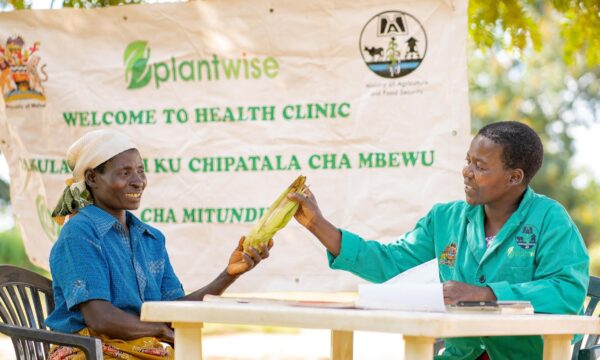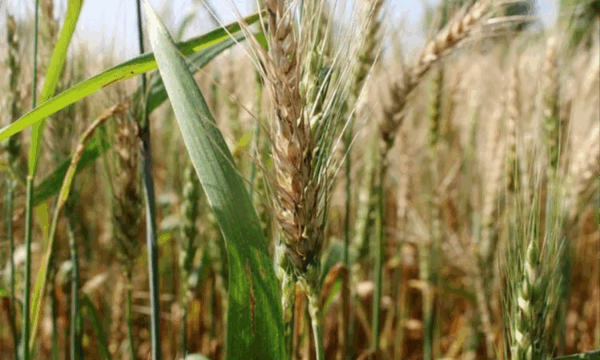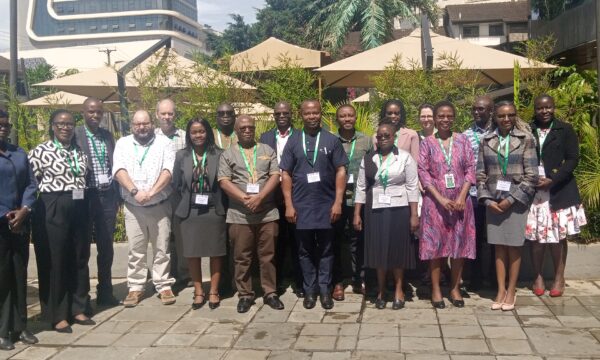
Anthracnose on dragon fruit can be caused by different Colletotrichum species © Yuan-Min Shen, Taichung DARES (CC BY-NC)
We’ve selected a few of the latest new geographic, host and species records for plant pests and diseases from CAB Abstracts. Records this fortnight include records of plant parasitic nematodes on cassava cultivated in the Brazilian Amazon, the first record of dragon fruit anthracnose caused by Colletotrichum truncatum in China and a new threat to potato production in Serbia.
Click on the links to view the abstracts:
- Fungal trunk pathogens associated with table grape decline in Northeastern Brazil.
Correia, K. C.; Câmara, M. P. S.; Barbosa, M. A. G.; Sales Júnior, R.; Agustí-Brisach, C.; Gramaje, D.; León, M.; García-Jiménez, J.; Abad-Campos, P.; Armengol, J.; Michereff, S. J. (2013) Phytopathologia Mediterranea 52 (2) 380-387. - First record of the genus Dilacreon Fennah, 1980 (Hemiptera: Fulgoromorpha: Cixiidae: Eucarpiini) from China, with description of one newspecies feeding on bamboo.
Zhang Pei; Chen XiangSheng (2013) Journal of the Kansas Entomological Society 86 (4) 318-324. - Nematodes associated with datepalm orchards of Kairpur district Sindh, Pakistan.
Gill, Z.; Firoza, K. (2014) Pakistan Journal of Nematology 32 (1) 113-119. - Melilotus indica and Chenopodium murale as new hosts of Meloidogyne incognita in Pakistan.
Haq, M. A.; Mahmood, K.; Shahid, M.; Khan, S. A.; Tahir, A. (2014) Pakistan Journal of Nematology 32 (1) 121-122. - Glycaspis brimblecombei Moore, 1964 (Hemiptera Psyllidae) invasion andnew records in the Mediterranean area.
Reguia, K.; Peris-Felipo, F. J. (2013) Biodiversity Journal 4 (4) 501-506. - First report of dragon fruit (Hylocereus undatus) anthracnose caused by Colletotrichum truncatum in China.
Guo LiWe; Wu YiXin; Ho, H. H.; Su YuanYing; Mao ZiChao; He PengFei; He YueQiu (2014) Journal of Phytopathology 162 (4) 272-275. - Plant parasitic nematodes on cassava cultivated in the Brazilian Amazon.
Rosa, J. M. O.; Oliveira, S. A. de; Jordão, A. L.; Siviero, A.; Oliveira, C. M. G. de (2014) Acta Amazonica 44 (2) 271-277. - Detection and identification of tomato black ring Nepovirus from imported cucumber seeds.
Gan QinHua; Chen ChangFa; Wang YingChao; Ji Ying; Wu XingHai; Shao XiuLing (2013) Food Research and Development 34 (22) 88-90. - Ralstonia solanacearum – a new threat to potato production in Serbia.
Milijaševic´-Marčic´, S.; Todorovic´, B.; Potočnik, I.; Rekanovic´, E.; Stepanovic´, M.; Mitrovic´, J.; Duduk, B. (2013) Pesticidi i Fitomedicina 28 (4) 229-237. - Two new records of aphid hyperparasitoids (Hym.: Figitidae) from Iran.
Koshkooei, M. K.; Talebi, A. A.; Rakhshani, E.; Pujade-Villar, J. (2013) Journal of Entomological Society of Iran 32 (2) En137-En140.
To view all search results for new geographic, host and species records for plant pests and diseases, click here
If there’s another new record you’d like to highlight, please post a comment.
Related News & Blogs
Most read blogs of 2025
As 2025 comes to a close, we’ve tallied the numbers to reveal the top 10 most read blogs on the PlantwisePlus Blog this year, plus a few firm favourites! Our most read blogs feature voices from those benefiting from our work, as well as crop pest guide…
17 December 2025




